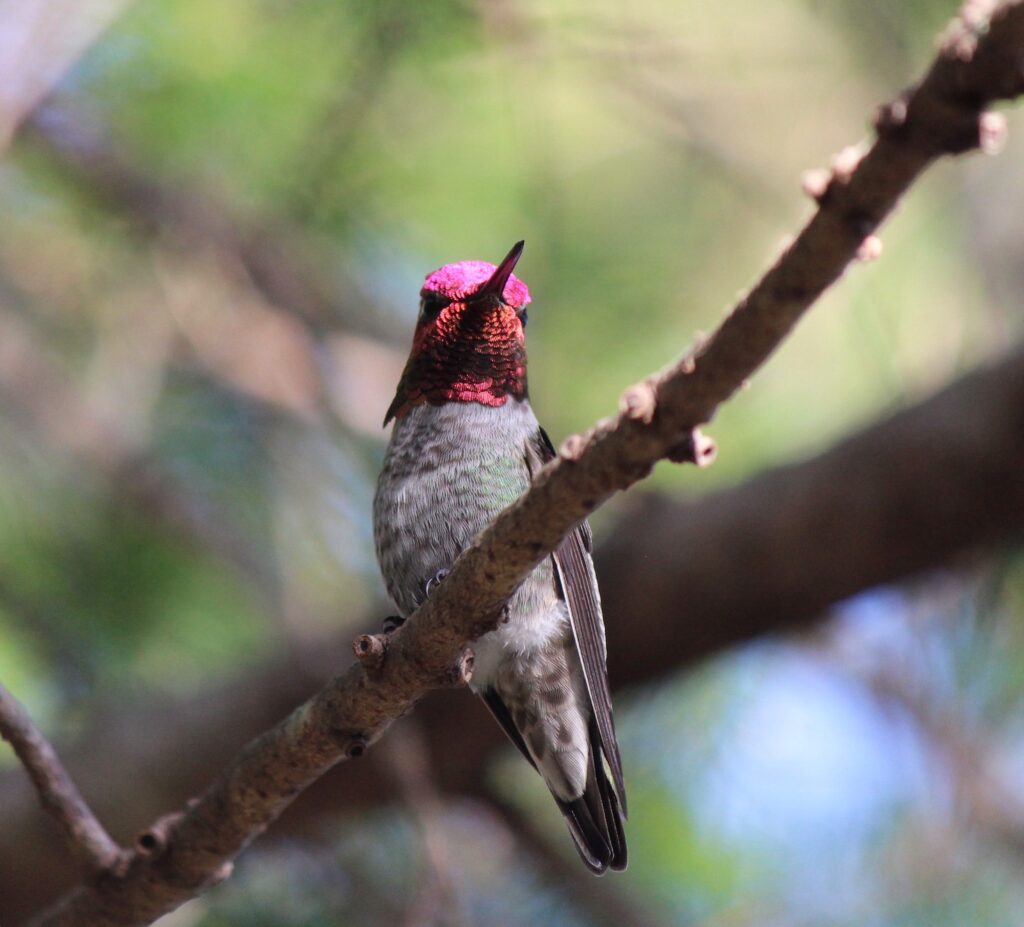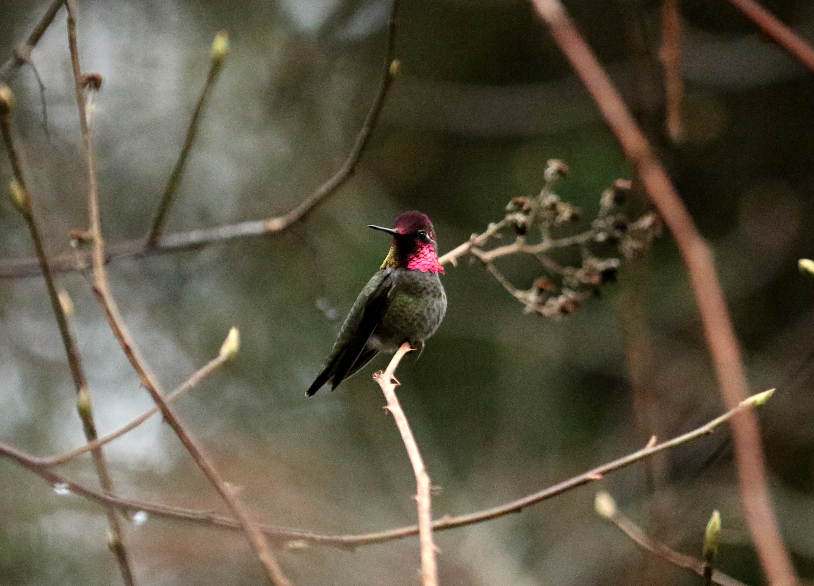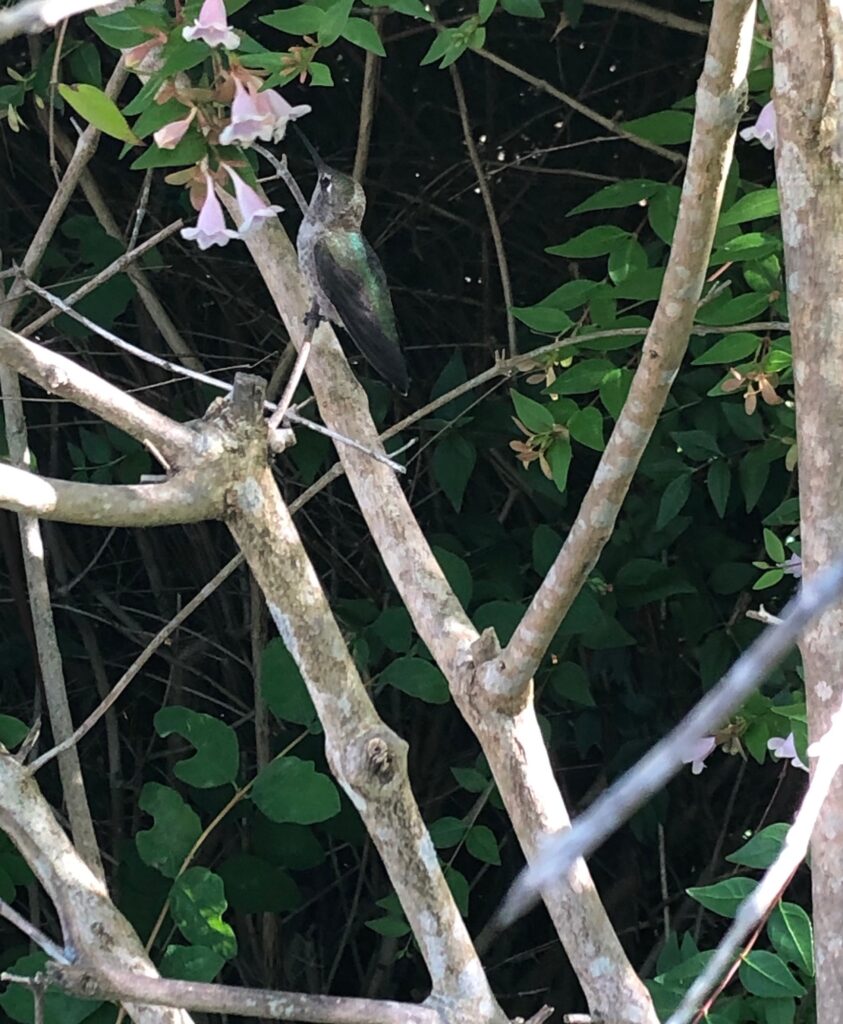Anna’s Hummingbird (Calypte anna)

Anna’s hummingbirds are one of the two common species on hummingbirds on Vancouver Island, along with the rufous hummingbird. Anna’s hummingbirds have green backs, and pale grey chests. Both males and females have iridescent red or pink feathers on their throats, and the males have red crowns as well.

Anna’s hummingbirds have long, thin beaks, which they use to feed on nectar from flowers. While they are feeding, they transport pollen on their feathers, which helps to pollinate the plants. They also feed on flying insects and tree sap. These hummingbirds are very territorial, and will aggressively defend their feeding areas from other hummingbirds and large insects.

Anna’s hummingbirds are found along the west coast of North America, from southern Canada to California. They were originally only found in California, but their range has expanded northwards due to the introduction of exotic plant species and hummingbird feeders in gardens, which increase the availability of food year-round. Anna’s hummingbirds do not migrate, which means that they have to be able to survive in winter temperatures. To conserve energy, they will enter a state of torpor during the coldest nights. In this state, their heart rate and breathing are extremely slow, and their body temperature drops to almost the same temperature as the environment. This is important because hummingbirds have very small energy reserves, and need to conserve energy for foraging throughout the day.
For more information, visit the British Columbia Breeding Bird Atlas, or the BC Species and Ecosystems Explorer.


